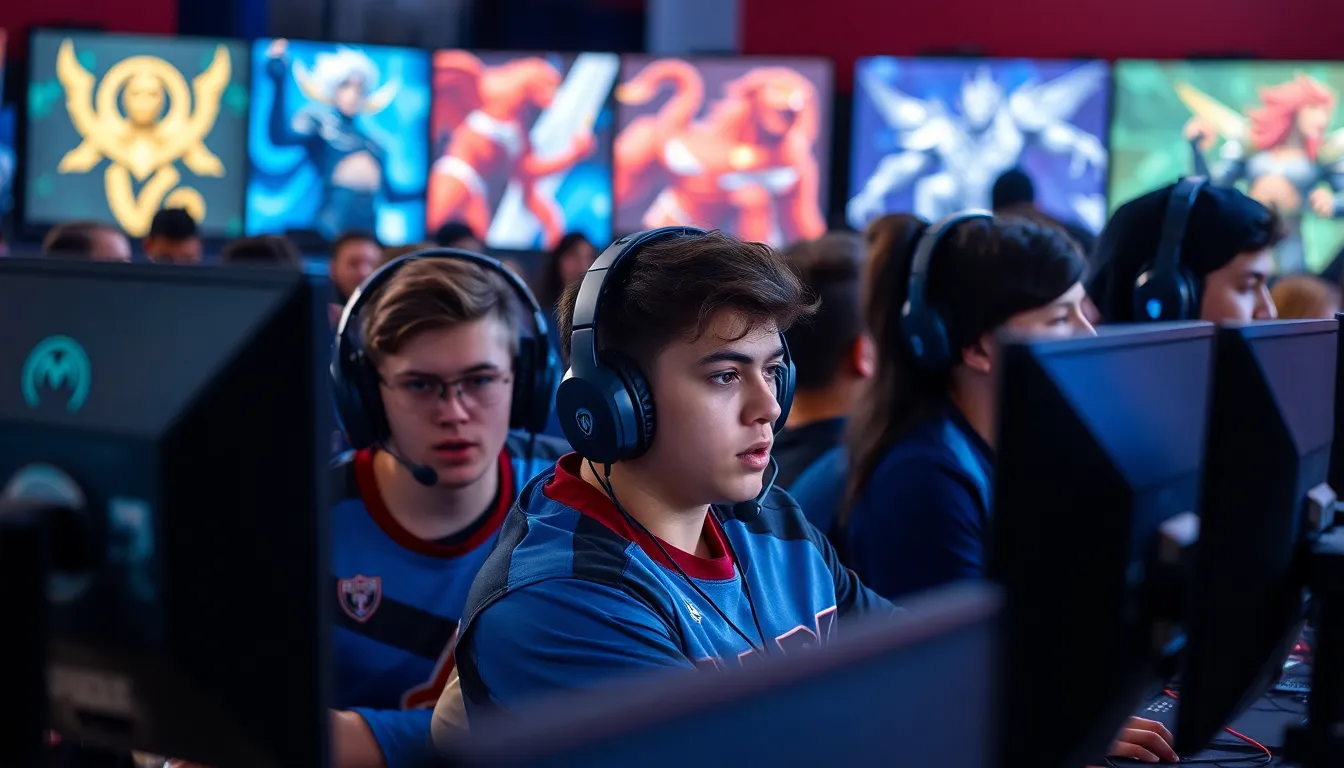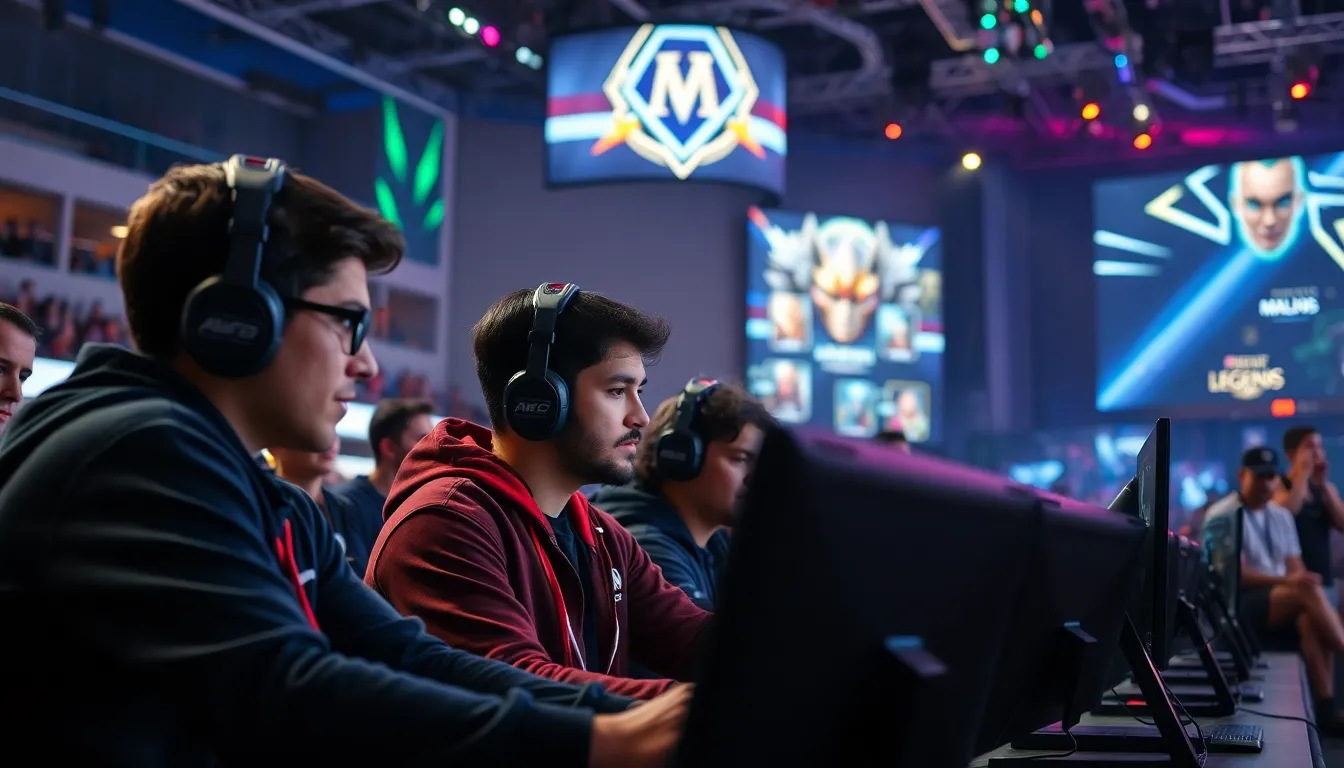In the high-stakes world of League of Legends, every match can feel like a battle for survival. But what happens when a beloved champion gets the boot? Welcome to the wild and wacky universe of champion bans, where strategy meets chaos and players are left scrambling for their next pick. It’s like a game of musical chairs, but instead of chairs, it’s champions—and the stakes are way higher.
Champion bans can make or break a game, turning the tide in unexpected ways. Whether it’s the dreaded Yasuo or the ever-annoying Teemo, knowing who’s on the chopping block can send shivers down a player’s spine. So buckle up as we dive into the hilarious and sometimes infuriating world of champion bans, exploring how they shape gameplay and keep players on their toes. Who knew a simple ban could spark such drama?
Table of Contents
ToggleOverview of League Champion Ban
Champion bans play a crucial role in League of Legends, impacting strategies and outcomes during competitive matches. Each game begins with both teams selecting champions, while simultaneously banning others to eliminate threats. Players must analyze each other’s strengths and weaknesses, leading to strategic decisions that can influence the entire match.
In professional play, certain champions emerge as meta favorites, often receiving bans to limit their effectiveness. Teams closely monitor shifting trends and adjust their strategies accordingly. This adaptability to changing champion viability keeps the gameplay dynamic, adding another layer of depth to team compositions.
Bans also emphasize team synergy and counterplay. A team might ban a champion known for its crowd control ability to reduce opponents’ tactical advantages. Conversely, banning a high-damage assassin can protect squishy teammates from being quickly eliminated in skirmishes.
Statistics show that banning certain champions can lead to higher win rates. Teams typically conduct analysis on past matches, identifying which champions influenced prior victories or defeats. Establishing a clear ban strategy based on historical data significantly increases the likelihood of success.
Ultimately, champion bans introduce unpredictable elements to the game. They require players to think critically and adapt to various scenarios, making every match unique and thrilling. The ban phase creates tension and anticipation, setting the stage for a highly strategized battle.
Reasons for Implementing Champion Bans

Champion bans play a significant role in creating a balanced and strategic environment for players. They address various factors that influence gameplay dynamics.
Competitive Integrity
Ensuring competitive integrity remains a primary reason for champion bans. Teams of different skill levels may exploit overpowered champions. Banning these champions prevents mismatches based on hero strength. The ban phase also safeguards against potential team compositions that might create unbalanced matchups. By targeting champions with statistical advantages, teams promote fair play and enhance the overall competitive experience. Data shows that effective bans can lead to increased fairness in matches, allowing strategy to rule rather than champion strength alone.
Player Experience
Enhancing player experience serves as another critical factor in champion bans. Players face frustration when encountering highly dominant champions repeatedly. By banning certain champions, the game promotes diversity in champion selection. This variety keeps the gameplay fresh and engaging. Choices become more impactful as players explore different strategies and roles. Statistics indicate that a broader champion pool leads to higher player satisfaction. Ultimately, bans create an environment where players can enjoy deeper strategic gameplay without feeling overpowered by select champions.
Common Ban Strategies
Champion bans introduce strategic depth in League of Legends. Teams employ various strategies to maximize their chances of victory.
Targeting Meta Champions
Focusing on meta champions allows teams to eliminate powerful options. These champions often dominate ranked play due to current game trends. Prioritizing bans against frequently picked champions disrupts the opponent’s strategy. Analyzed statistics consistently show that banning popular picks can significantly increase win rates. Targeting champions like Zeri or Elise, who frequently appear in top-tier play, reflects an adaptive strategy. Banning meta champions fosters a more balanced and competitive environment, allowing teams to leverage unique compositions.
Countering Opponent’s Strengths
Identifying opponents’ strengths can guide effective bans. Targeting champions that excel in specific roles or against favored picks proves vital. For example, banning a strong jungler like Lee Sin can hinder the enemy’s early-game dominance. This strategy forces opponents to adapt and choose less optimal champions. Teams analyze previous matchups to uncover vulnerable champions, leading to strategic decisions during the ban phase. Successfully countering strengths minimizes the opponent’s impact while enhancing a team’s own strategies.
The Impact of Champion Bans on Gameplay
Champion bans significantly alter gameplay dynamics in League of Legends. They compel teams to rethink their strategies and adapt to the evolving landscape of each match.
Shift in Team Strategies
Teams frequently adjust their strategies based on champion bans. Targeting specific champions forces opponents to pivot toward less favorable options. For example, banning a high-priority pick like Yasuo can disrupt enemy plans and open up new pathways for victory. Teams thrive on identifying patterns from previous encounters, allowing them to devise effective countermeasures. Adaptations often include focusing on alternative champions that excel in the current match environment. Such adjustments enhance overall team synergy and create opportunities for exploitation in enemy weaknesses. High-level play illustrates that well-executed bans directly correlate with increased win rates.
Player Adaptation
Players demonstrate flexibility in response to champion bans. When favored champions fall off the table, skillful players quickly adapt by mastering alternative choices. Techniques for utilizing unexpected champions often emerge, catching opponents off guard. Champions’ strengths and weaknesses take on new importance, as players shift focus from their mainstays to lesser-used options. Understanding champion matchups becomes critical, offering insights into possible advantages in trades and skirmishes. As players embrace this dynamic environment, the quality of gameplay rises. Ultimately, the necessity for adaptation enriches player experience and maintains the excitement of competitive matches.
Champion bans in League of Legends are more than just a tactical phase; they shape the very fabric of competitive play. By strategically eliminating powerful champions teams create a landscape where adaptability and critical thinking thrive. This dynamic not only enhances the excitement of matches but also fosters a diverse champion pool that keeps gameplay fresh.
As teams analyze past performances and adjust their strategies accordingly they can significantly improve their chances of victory. Ultimately the ban phase serves as a crucial element that requires players to remain agile and innovative, ensuring that every match is a unique and thrilling experience.



